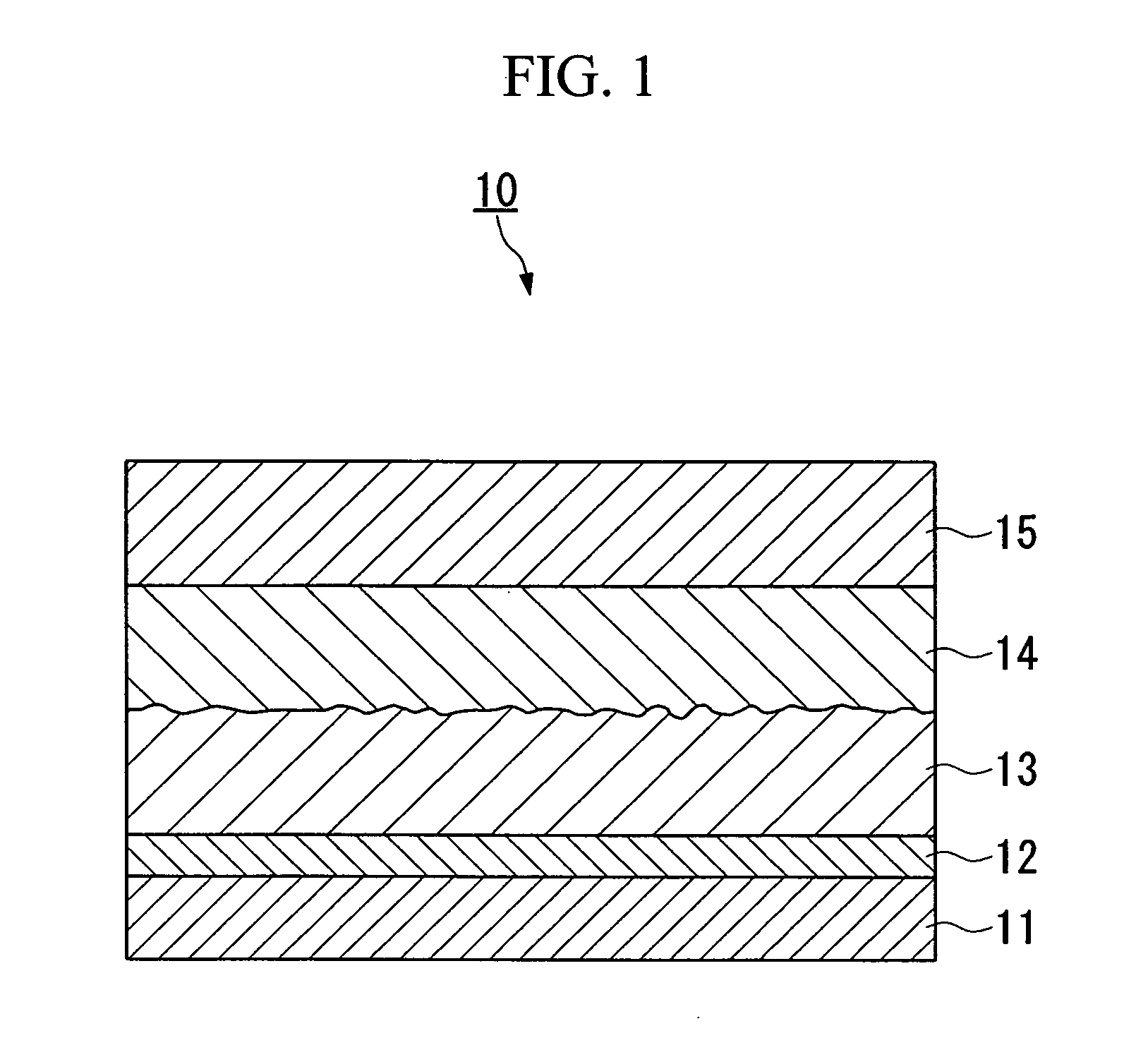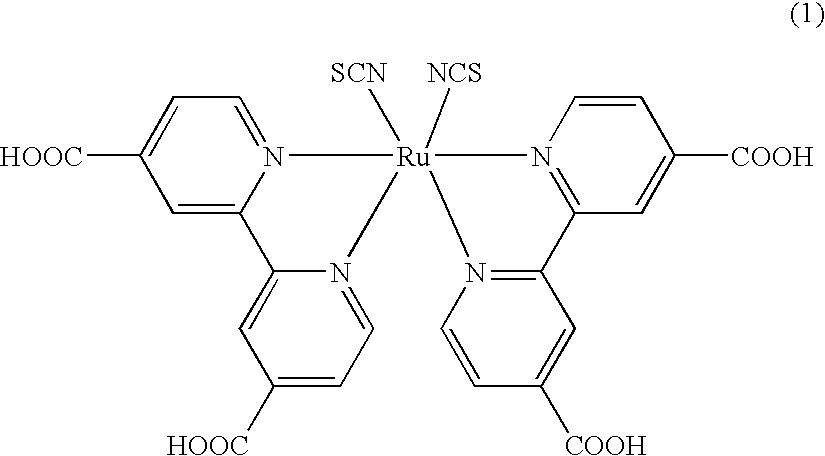Conductive composition, conductive coating material, conductive resin, capacitor, photoelectric transducer, and their production method
a technology of conductive coating and conductive resin, which is applied in the direction of non-conductive materials with dispersed conductive materials, conductors, and other directions, can solve the problems of large material loss, unpreferable use in the field of electrical and electronic components, and the existence of sulfonic acid group and carboxylic acid group of polyelectrolyte, etc., to achieve excellent solvent resistance and heat resistance, and no ionic conductivity
- Summary
- Abstract
- Description
- Claims
- Application Information
AI Technical Summary
Benefits of technology
Problems solved by technology
Method used
Image
Examples
examples of first aspect
[0443] The present aspect will now be described in detail by way of examples.
(Test Method)
(1) Solvent Solubility
[0444] Solubility in each of NMP (N-methyl pyrrolidone), acetone, MEK (methyl ethyl ketone), toluene and water was examined. Samples were considered to be dissolved when particles are not remained after dissolving in a solvent and a coating film can be formed. The amount dissolved in each solvent was evaluated according to the following criteria. [0445] A: dissolved in an amount of more than 3% [0446] B: dissolved in an amount of 1 to 3% [0447] C: dissolved in an amount of less than 1% or not dissolved
(2) Surface Resistance
[0448] Surface resistance of a coating film having a thickness of 2 μm was measured by using a resistivity meter (manufactured by Mitsubishi Chemical Corporation under the trade name of LORESTA GP).
(3) Ion Concentration
[0449] After dipping the resulting conductive composition in pure water at room temperature for 24 hours, ion concentrations o...
example 1
1) Synthesis of Cyano Group-containing Polymer Compound
[0450] 50 g of acrylonitrile and 5 g of butadiene were dissolved in 500 ml of toluene and 2.5 g of azobisisobutyronitrile as a polymerization initiator was added, and then the mixture was polymerized at 60° C. for 8 hours.
[0451] The polymer produced by polymerization was washed with methanol.
2) Preparation of Conductive Composition
[0452] 10 g of the cyano group-containing polymer compound obtained in the step 1) was dissolved in 90 g of acetonitrile and 50 g of pyrrole was added, followed by stirring for one hour while cooling to −20° C.
[0453] To this solution, an oxidizing agent solution prepared by dissolving 250 g of ferric chloride in 1250 ml of acetonitrile was added dropwise over 2 hours while maintaining at −20° C. Furthermore, the pyrrole was polymerized while continuously stirring for 12 hours. After the completion of the reaction, the resulting solution showed a blackish blue color.
[0454] After the completion o...
example 2
1) Synthesis of Cyano Group-containing Polymer Compound
[0455] 30 g of acrylonitrile and 20 g of lauryl acrylate were dissolved in 500 ml of toluene and 2.5 g of azobisisobutyronitrile as a polymerization initiator was added, and then the mixture was polymerized at 60° C. for 8 hours.
[0456] The polymer produced by polymerization was washed with methanol.
2) Preparation of Conductive Composition
[0457] 10 g of the cyano group-containing polymer compound obtained in the step 1) was dissolved in 90 g of acetonitrile and 50 g of pyrrole was added, followed by stirring for one hour while cooling to −20° C.
[0458] To this solution, an oxidizing agent solution prepared by dissolving 250 g of ferric chloride in 1250 ml of acetonitrile was added dropwise over 2 hours while maintaining at −20° C. Furthermore, the pyrrole was polymerized while continuously stirring for 12 hours. After the completion of the reaction, the resulting solution showed a blackish blue color.
[0459] After the compl...
PUM
| Property | Measurement | Unit |
|---|---|---|
| length | aaaaa | aaaaa |
| diameter | aaaaa | aaaaa |
| molar ratio | aaaaa | aaaaa |
Abstract
Description
Claims
Application Information
 Login to View More
Login to View More - R&D
- Intellectual Property
- Life Sciences
- Materials
- Tech Scout
- Unparalleled Data Quality
- Higher Quality Content
- 60% Fewer Hallucinations
Browse by: Latest US Patents, China's latest patents, Technical Efficacy Thesaurus, Application Domain, Technology Topic, Popular Technical Reports.
© 2025 PatSnap. All rights reserved.Legal|Privacy policy|Modern Slavery Act Transparency Statement|Sitemap|About US| Contact US: help@patsnap.com


